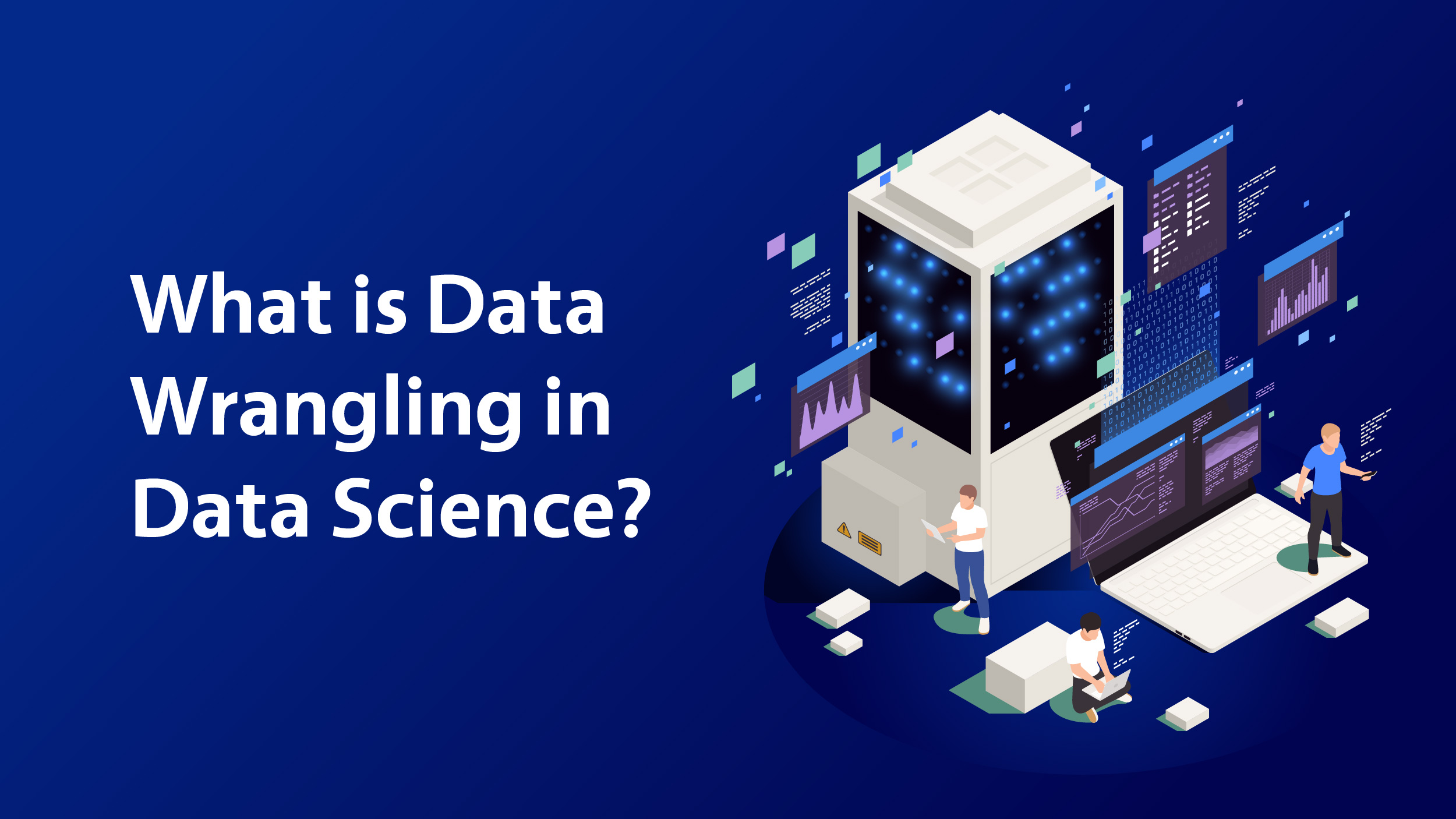Imagine that you have a jigsaw puzzle with extra pieces that you don’t need, missing components, and pieces that are all mixed up. That is very similar to the raw data that we frequently work with in data science. Data wrangling is like the magic that lets all those jigsaw pieces fit together just right, giving us a crystal-clear picture. In this blog, we’ll examine the crucial skill of data-wrangling—the process by which we take unorganized data and transform it into something we can use to learn insightful things.
So, let’s get started!
What is Data Wrangling?
Data wrangling is the process of rectifying errors and merging large, complicated data sets to make them more accessible and understandable. Large amounts of data need to be stored and organized for analysis because the amount of data and data sources available today are expanding quickly.
Data-wrangling, commonly referred to as data munging, is the act of reorganizing, transforming, and mapping data from one “raw” form to another to increase its value and usability for a range of downstream uses, including analytics.
What is Data Wrangling in Data Science?

The data science process begins with data wrangling, commonly referred to as data munging or data cleansing. It entails structuring and processing unstructured data in a way that makes it suitable for analysis. It takes up a lot of time for data scientists because they want to make sure the data they use is accurate, consistent, and reliable.
Data wrangling often involves numerous phases, including:
-
Data gathering:
This entails obtaining data from a variety of sources, including files, databases, APIs, and the web. According to a survey by IDC, firms in the US lose $3.1 trillion annually as a result of poor data quality. Therefore, this step is crucial.
-
Data cleaning:
In this stage, missing values, outliers, inconsistencies, and errors are handled by cleaning and preprocessing the data. This could entail replacing values that are missing, getting rid of duplication, standardizing formats, and fixing mistakes.
-
Data Transformation:
It involves transforming data into a format that is appropriate for analysis. In doing so, data may be reshaped, aggregated, or summarized, given new variables, or subjected to mathematical or statistical procedures.
-
Data Integration:
It is used to mix and merge the data from several sources into a single dataset. To accomplish this, data may need to be matched and joined using common variables or keys.
-
Data validation:
Data integrity and correctness are guaranteed via data validation. It involves examining the data for problems with consistency, outliers, or data integrity.
-
Data Documentation:
For reproducibility and transparency, the data wrangling process must be properly documented. This entails recording the actions conducted, the presumptions made, and any data transformations or alterations that were made.
The accuracy and validity of the insights and conclusions drawn from the analysis are directly impacted by the quality and reliability of the data, hence data manipulation is essential. Effective data wrangling can ensure that the data is in a format that is acceptable for analysis, minimizing biases and inaccuracies that may occur when working with raw and unprocessed data.
Decoding Data Wrangling Tools

Data can be collected, imported, organized, and cleaned using a variety of data wrangling techniques before being fed into analytics and BI applications.
Many programs and tools, including Python, R, and SQL, offer libraries and methods made expressly for data wrangling tasks. This process is made more effective and controllable by these tools’ features for data cleansing, transformation, integration, and validation.
Some fundamental data munging tools are listed below:
- Spreadsheets and Excel Power Query are the most manual tools.
- OpenRefine – It is an automatic data-cleaning tool that needs programming knowledge
- Tabula is a tool appropriate for all forms of data.
- A data service called Google DataPrep investigates, purifies, and prepares data.
Importance of Data Wrangling
Did you know that only 20% of the time spent by data experts is spent exploring and modeling the data?
Data scientists spend nearly 80% of their time on data preparation, which includes data-wrangling, cleansing, and transformation, according to IBM research.
Some people might wonder whether the time and effort spent on data wrangling is worthwhile. You can comprehend by using a straightforward analogy. Before the above-ground portion of a skyscraper is built, the foundation can be expensive and time-consuming. This sturdy foundation is still crucial for the structure to remain tall and fulfill its function for many years. Similar to data processing, once the infrastructure and code are in place, it will produce results right away (and perhaps almost quickly) for as long as the process is applicable.
However, eliminating crucial data-wrangling processes can result in serious setbacks, missed opportunities, and flawed models that harm the organization’s reputation for analysis.
Data processing now wouldn’t be possible without the use of data-wrangling tools. The following are the main benefits of employing data wrangling tools:
- Making usable raw data. Data that has been correctly wrangled ensures that high-quality data is used in the subsequent analysis.
- Putting all information from many sources in one place so that it can be utilized.
- Assembling raw data in the required format and comprehending the data’s business context
- Automated tools for data integration are used as data-wrangling methods to purge and transform source data into a common format. These standardized data are used by businesses to carry out critical cross-data set analytics.
- Cleaning up the data to remove any errors or erroneous or missing components
Data mining involves collecting data and making sense of it, while data wrangling serves as a preliminary step in this process. It also assists in making specific, timely decisions.
Wrap Up
The key to any effective data analysis effort is the ability to manage the data. It involves converting unstructured, unclean data into a clear, organized shape that can be quickly analyzed and evaluated. To ensure the correctness and dependability of the data, several approaches like cleaning, merging, and transformation are used. Data scientists who put time and effort into data-wrangling can find insightful information, make wise choices, and promote corporate growth. Even the most sophisticated analytics tools and algorithms would be useless without competent data wrangling.




